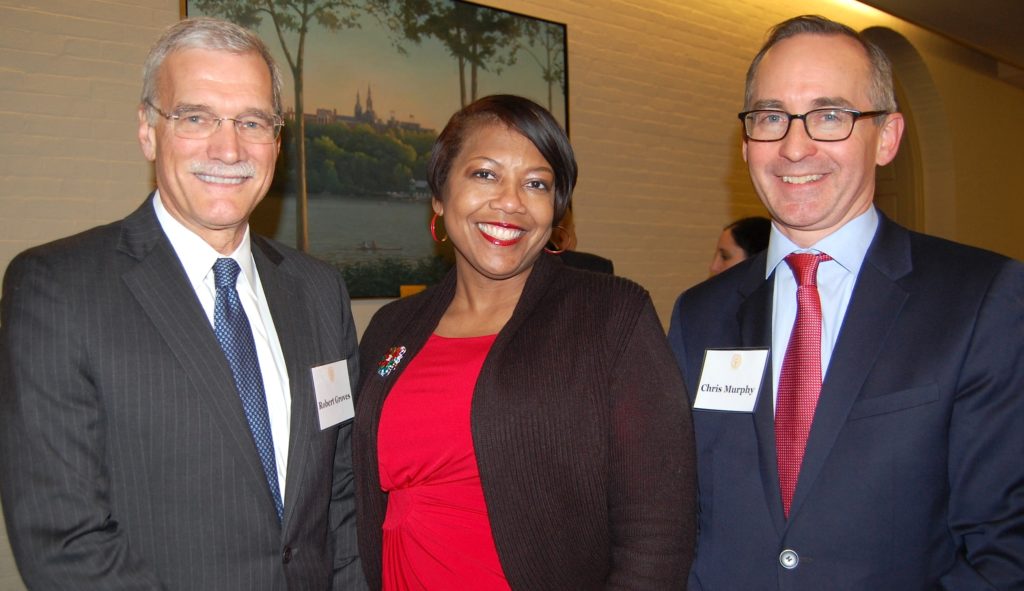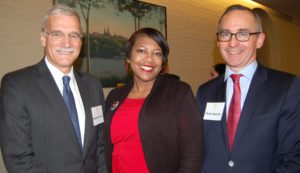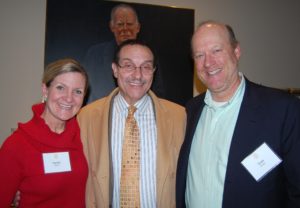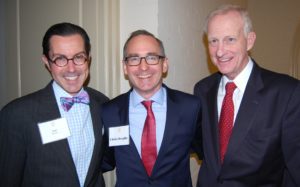Georgetown U. Event Celebrates Holidays, Accomplishments
By • December 11, 2017 0 1407

On Thursday night, Dec. 7, at Georgetown University’s Riggs Library, one person’s absence was noted: President John J. DeGioia. The university’s 48th president was in China to work on a commission addressing climate change.
“This is the first time he’s missed this in 17 years,” said Provost Robert Groves.
The event was the annual Holiday Open House, meant to connect the university with the surrounding communities, which the university considers partners.
The hospitality was readily apparent; it was as if attendees were invited to a Christmas dinner, what with the hors d’oeuvres that made reference to the traditional ham and turkey. To cap off the meal, people could pick up cookies shaped like snowflakes or angels and dip them in hot chocolate.
The party also celebrated the contributions Georgetown University has made in the District. The university calls itself D.C.’s number-one private employer. Chris Murphy, vice president for government relations and community engagement, stressed the university’s “work to advance the common good,” which involves a focus on local issues and the formation of “mutually supportive partnerships” with a variety of groups: schools, nonprofits, businesses and D.C. government agencies.
One project highlighted in particular was the Georgetown Health Justice Alliance, which involves both law school and medical school students working together to help people living in poverty get access to needed health services.
A beneficiary of this six-year-old program is Anacostia High School. Principal Eric Fraser said that his students face significant risk factors, but also have a lot of potential. Fraser wants his students to be classroom-ready. He said that this Georgetown University project, which provides physical and mental health care and legal aid, is an important contributor in improving the lives of his students. “We’re really grateful to have it,” he said.
Yael Cannon, who oversees the initiative, said that half a person’s health is causally linked to genetics, while the other half is determined by social conditions. Cannon provided an example of a student who was hungry for a week every month. Law and medical students worked together to find a solution: helping the family learn how to apply for food stamps, for which the family was eligible.
Another instance of medicine and law working together was to get health insurance for a teenage mother and her baby. “No newborn in the city should be uninsured,” said Cannon.
Clinton Lacey, director of the District Department of Youth Rehabilitation Services, said that when Georgetown University students interact with young people who have gotten into trouble, these interactions inspire the young people to go back to school. “Education is the key,” he said.

Georgetown University Provost Robert Groves, Advisory Neighborhood Commissioner Monica Roache and G.U. Vice President for Governmental Relations Chris Murphy. Photo by Robert Devaney.

Sarah and Tom Strike flank former mayor of D.C. Vincent Gray. Photo by Robert Devaney.

Jon Bouker of Arent Fox, G.U. Vice President for Governmental Relations Chris Murphy and Ward 2 Council member Jack Evans. Photo by Robert Devaney.

